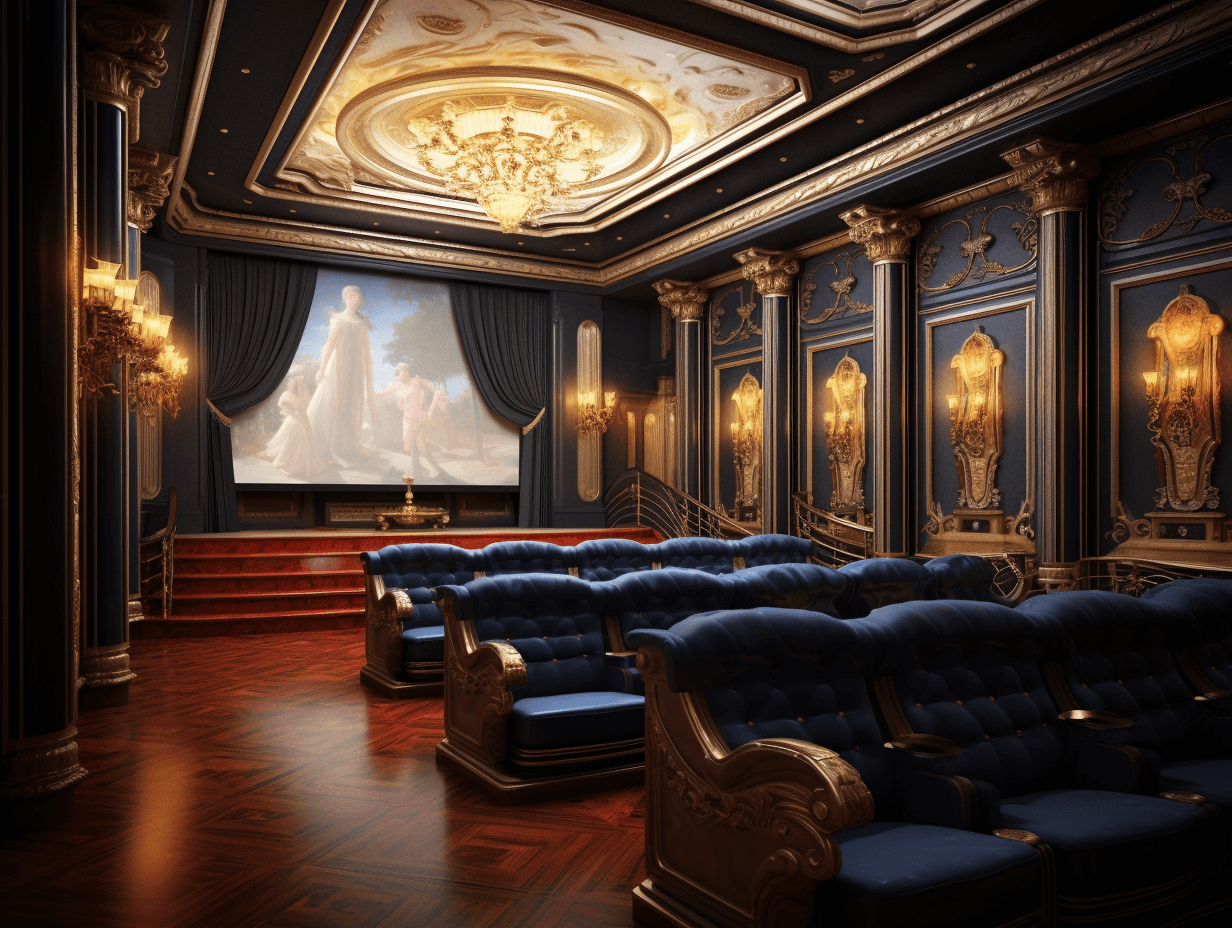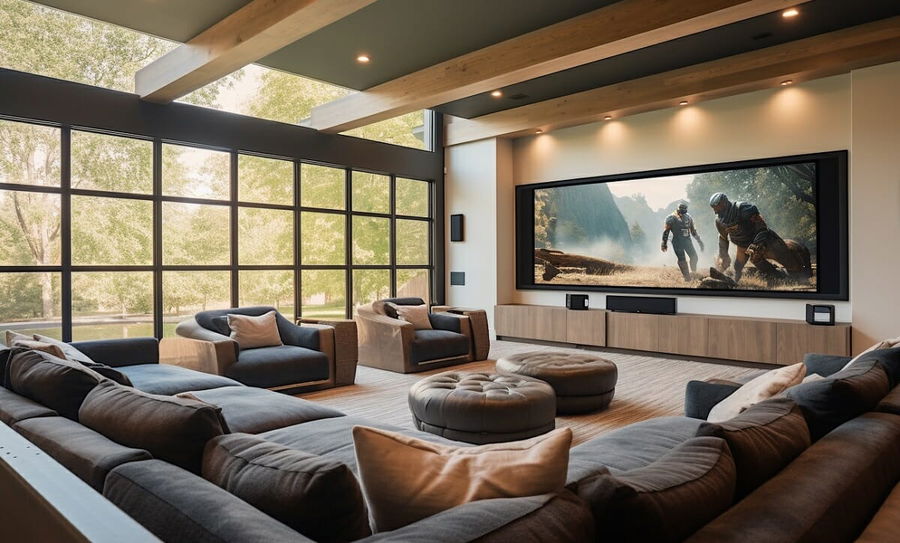Home Theater 101: Everything You Required to Know for a Cinematic Experience in your home
Developing a home theater that equals the motion picture experience of a commercial theatre includes mindful consideration of multiple elements, consisting of display option, stereo, and room design. Each aspect plays a crucial role in achieving the desired atmosphere and performance. Whether you are pondering the ideal screen size or the complexities of surround sound, comprehending these basics is necessary. As we discover these critical components, it becomes evident that the choices made can considerably affect your general viewing experience, leaving one to ponder how these decisions will form your individual movie theater.
Picking the Right Screen
When setting up a home theater, picking the ideal screen can make or damage the checking out experience - tampa home theater installation. The screen functions as the focal point of your setup, affecting picture quality, watching angles, and general aesthetic. Secret elements to take into consideration include display resolution, dimension, and type
First, establish the appropriate screen dimension based on your area dimensions and seating distance. Next, select in between various screen types, such as fixed-frame, mechanized, or retracting displays, each offering distinctive advantages.
Resolution is an additional crucial aspect. For a truly immersive experience, think about a screen created for 4K or perhaps 8K content, guaranteeing sharpness and clearness. In addition, consider the screen's gain, which affects brightness and contrast; a higher gain can enhance brightness in well-lit spaces, while a lower gain may be better for darker settings.
Picking Sound Equipment
Audio equipment is an important part of any kind of home cinema system, dramatically enhancing the general viewing experience. The selection of audio gear can identify the depth, clarity, and immersion of sound, essential for producing a cinematic environment.
When picking audio tools, take into consideration a border audio system, which normally consists of a receiver, several speakers, and a subwoofer. A 5.1 or 7.1 network system is advised, where the very first number represents the speakers and the 2nd the speaker, supplying an immersive soundscape. The receiver is the heart of the system, managing audio and video clip signals, and must sustain contemporary formats like Dolby Atmos for a boosted spatial experience.
Quality audio speakers are vital; look for models that supply a well balanced noise profile with excellent bass action. Floor-standing speakers can generate richer noise, while bookshelf options conserve space. In addition, take into consideration wireless alternatives for simplicity of installment, although wired systems usually supply exceptional efficiency.

Optimum Seating Plans
Developing an excellent home cinema experience hinges substantially on optimum seating arrangements. The arrangement of seats plays a critical duty in both convenience and checking out high quality, directly influencing the general cinematic experience.
First, consider the display dimension and seeing range. A typical guideline is to place seats at a range roughly 1.5 to 2.5 times the diagonal dimension of the screen. This makes certain an immersive experience without stressing the eyes.
Next, altitude is important. The back rows should be greater great site than the front to avoid blockages if your seating is in a tiered layout. For flat seats, make sure that the front row is not too near the screen, which everyone has a clear line of view.
Furthermore, take into consideration the plan in regards to social dynamics. Team seats can improve the public experience, while private seats might be chosen for individual viewing.

Finally, prioritize comfort with ergonomic seats that sustains extended viewing periods. Including recliners or supported seats can dramatically enhance the experience, making the home movie theater a recommended location for both home entertainment and leisure.
Lighting and Atmosphere
Reliable lighting and atmosphere are crucial components of a properly designed home cinema, as they significantly influence the checking out experience. The appropriate lighting can enhance the cinematic feel, while bad selections can diminish it. For optimal results, think about a layered illumination strategy that consists of ambient, job, and accent lighting.
Ambient lighting provides general illumination, guaranteeing that the area is not totally dark, which can strain the eyes. Dimmer switches are extremely suggested, enabling for modifications based on the material being checked out. Task illumination, such as wall sconces or floor lamps, offers functional illumination for activities like analysis or browsing the area without interrupting the general environment.
Accent illumination can be used to highlight architectural attributes or produce prime focus, including deepness and interest to the space. LED strip lights behind screens or along shelves can give a refined glow that improves the aesthetic experience without overwhelming the customer.

Wiring and Installation Tips
A well-planned wiring setup is crucial for attaining optimum performance in your home cinema system. Correct electrical wiring not only ensures high-quality sound and video signals but additionally improves the general aesthetic of your room. Begin by mapping out your layout, recognizing where each element will be positioned, including your screen, speakers, and receiver.
When selecting wires, focus on top quality, appropriately assessed wiring to lower signal loss. HDMI cords should be made use read what he said of for video links, while speaker cord ought to match the requirements of your speakers and amplifier. Select in-wall rated cables to follow safety and security requirements and maintain a clean look.

Verdict
In recap, developing a remarkable home movie theater experience needs mindful factor to consider of numerous elements, including screen choice, audio tools, seating setups, lights, and wiring. By prioritizing these factors, a cinematic atmosphere can be effectively duplicated, enabling for immersive seeing experiences that equal standard movie theater setups.
Producing a home movie theater that equals the this contact form cinematic experience of an industrial theatre involves careful consideration of multiple parts, consisting of display choice, audio systems, and room layout.When setting up a home cinema, picking the appropriate display can make or break the seeing experience. Next, pick in between different screen kinds, such as fixed-frame, mechanized, or retracting screens, each offering distinct benefits. For a genuinely immersive experience, think about a screen designed for 4K or also 8K material, making sure sharpness and clearness.In recap, developing an outstanding home movie theater experience requires mindful factor to consider of various aspects, consisting of screen choice, audio equipment, seating setups, illumination, and wiring.
Comments on “Why Tampa Home Theater Installation Is a Game-Changer for Your Entertainment”